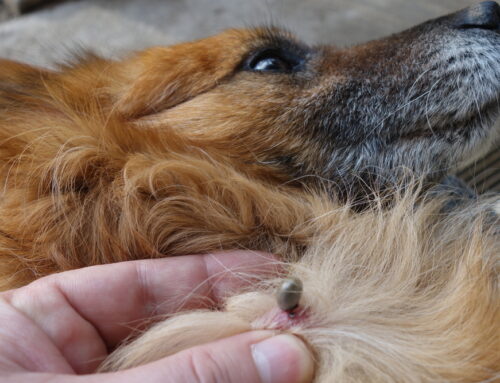August 15 is National Check the Chip Day, so this is a great time to discuss why microchipping your pet is such an important part of their health care plan. Our team at Oliver Animal Hospital would like to answer some frequently asked questions concerning microchipping.
Question: Why should I microchip my pet?
Answer: Microchipped pets are more likely to be returned to their owners if they go missing. According to a 2009 study, microchipped cats were 20 times more likely to be reunited with their owners than cats without microchips, and microchipped dogs were two and a half times more likely to be reunited with their owners than dogs without chips. Here are three reasons why microchipping your pet should be on your to-do list:
- Your pet gets lost — You may have a collar and current identification tags that your pet wears at all times, but if they get lost, the collar could break, fall off, or be removed. A microchip is a reliable way to ensure your pet carries your contact information at all times. Some microchip registration companies also allow you to store your pet’s medical information in their database.
- Your pet is stolen — If your pet is stolen, the thief can change their appearance by shaving their coat, for example. A microchip proves that the pet in question belongs to you.
- You have a medical emergency — If something happens to you, such as a traffic accident or heart attack, while you are walking your pet, the microchip can help identify you and contact your family.
Q: What is the device used to microchip my pet?
A: The microchip is an electronic chip the size of a grain of rice enclosed in a glass cylinder. The device is not powered by a battery. When a scanner is passed over the area, radio waves emitted by the scanner activate the chip, and the chip transmits your pet’s identification number to the scanner, and is displayed on the scanner’s screen. The microchip is not a GPS device, and cannot track your pet if they are lost.
Q: What is the procedure to implant a microchip in my pet?
A: A hypodermic needle, slightly larger than those used to administer vaccines, will be used to inject the microchip in your pet’s subcutaneous tissue between their shoulder blades. The procedure is no more painful than a routine injection, and can easily be performed when your pet is receiving their regular vaccines or their annual wellness exam. If your pet is under general anesthesia for a routine procedure such as spaying, neutering, or a dental cleaning, the microchip can be implanted before they wake up.
Q: How does a microchip help reunite me with my pet?

A: You will need to register the microchip with the microchip database registry. You will receive instructions when your pet is microchipped. You will need to keep this information current to ensure you can be reached if your pet goes missing. If your pet is found and taken to a shelter or veterinary clinic, they will scan your pet for a microchip. If they find a microchip, and the registry has accurate information, you will be contacted as soon as possible.
Q: Will my pet still need to wear identification and rabies tags?
A: A microchip is not a replacement for identification tags. The device is a great tamper-proof, permanent method to identify your pet, but if they get lost, current identification tags can also help with their prompt return. The microchip is for circumstances when your pet’s tags are lost or removed. Your pet should also always wear their rabies tags to prove that they are vaccinated, in case of an incident that could put your pet at risk as a rabies suspect.
Q: Can my pet’s microchip be read worldwide?
A: The International Standards Organization (ISO) has detailed a global microchip standard, which is intended to create a consistent worldwide identification system. ISO standard microchips should be able to be read if your pet goes missing in another country. Some veterinarians are using universal scanners that can read ISO and non-ISO microchips.
Q: What are possible problems my pet could experience if they are microchipped?
A: The most common problem reported is the microchip’s migration from the original implantation site, making the device hard to find. Other issues are extremely rare, and include microchip failure, hair loss, swelling, and tumor formation at the implantation site.
Q: Is my privacy at risk if I have my pet microchipped?
A: Your privacy is not at risk if you have your pet microchipped. The information you provide to the manufacturer’s microchip registry will be used only to contact you if your pet is found. This information cannot be accessed by anyone other than the manufacturer, and protections are in place to secure this information.
Microchipping your pet is the best way to ensure they will be returned to you should they go missing. If you would like your pet microchipped, do not hesitate to contact our team at Oliver Animal Hospital, your south Austin veterinarians, to schedule an appointment.







Leave A Comment